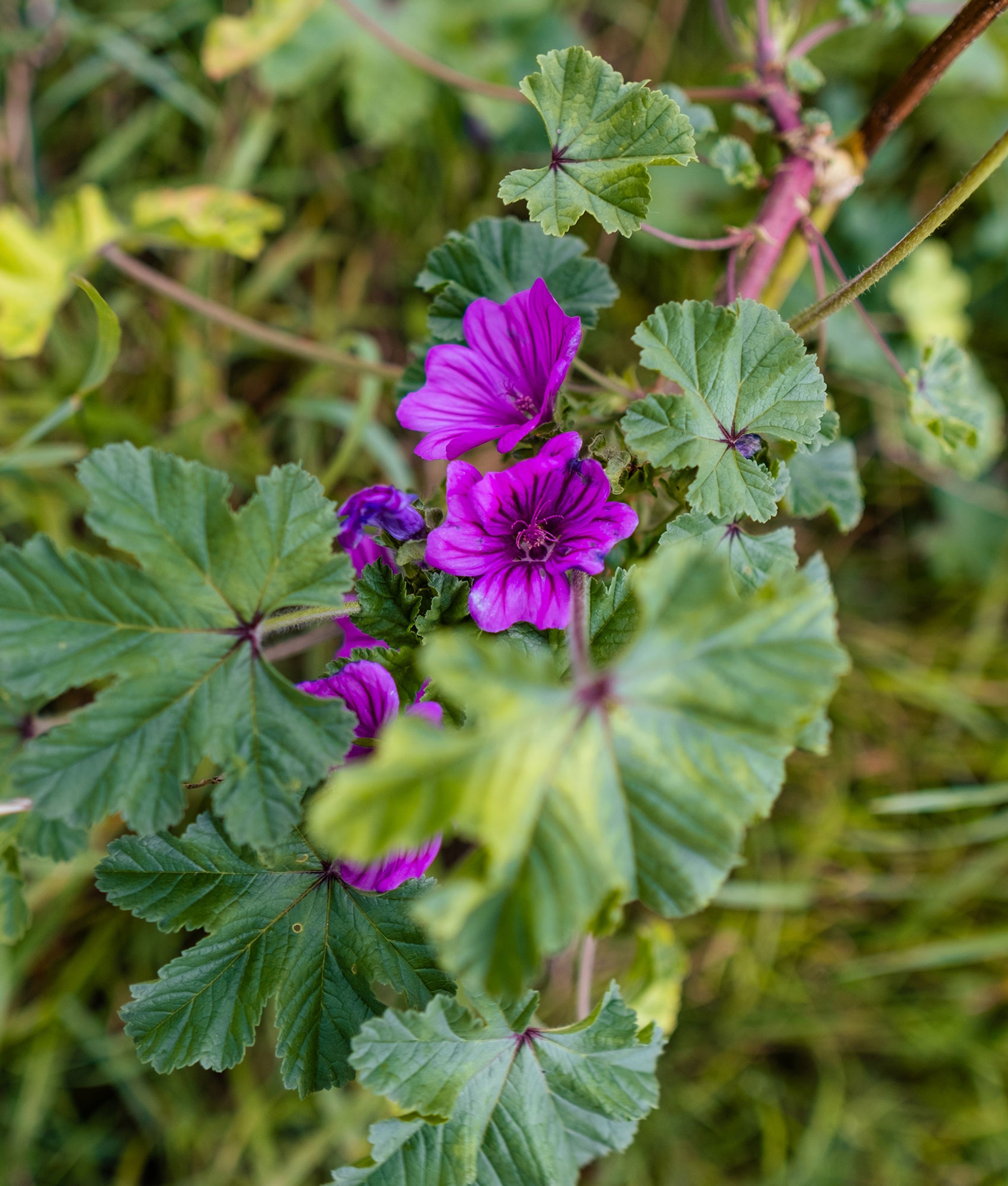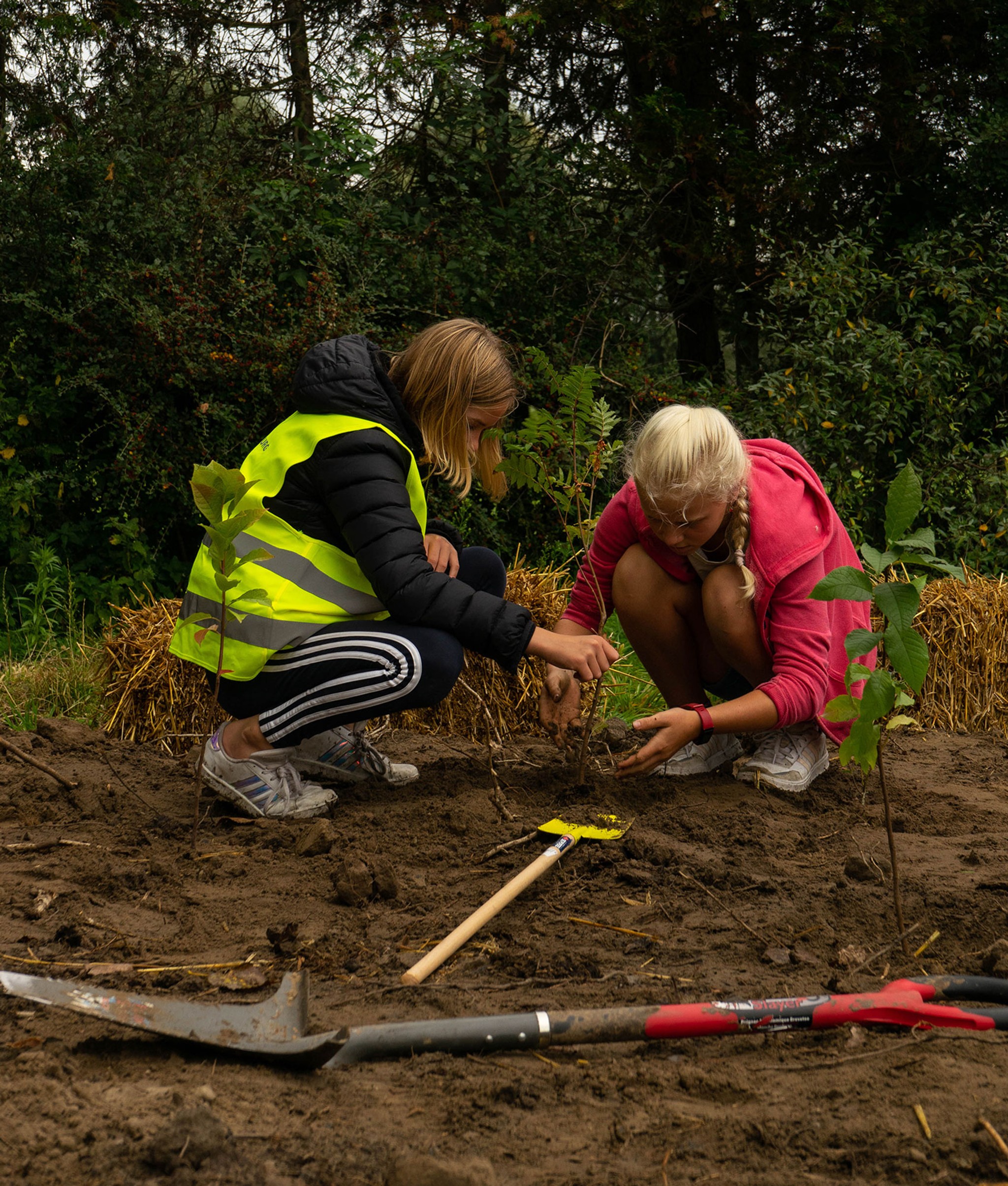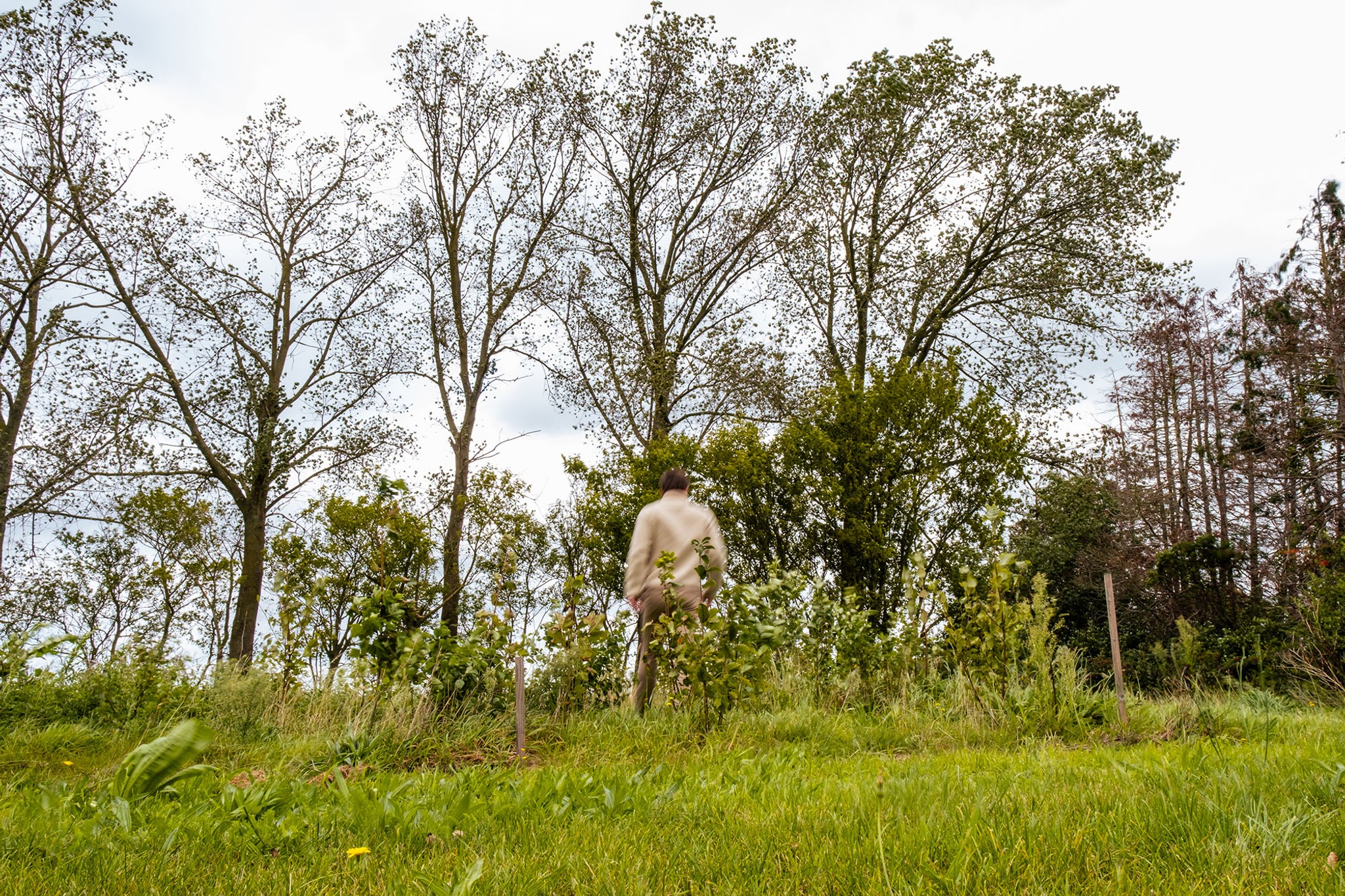Mandelwijk Forest
A community forest in Oudenburg.

0
Trees
0
Square Meters
0
Native Species
0
Youth Impacted
Self sustaining pocket forest
Mandelwijk Forest has grown well overall, despite some challenges. The forest was planted on a wet ground layer, with soil that lacked sufficient oxygenation. To address this issue before planting, we used machinery to aerate the soil, allowing the trees to establish themselves in a more favorable environment. As a result, the roots have remained in the upper soil layers, where oxygen levels are better, avoiding the deeper, oxygen-deprived layers. The forest is doing well, even on this relatively thin layer of soil, with the ratchet poplar (Populus tremula) growing best.
Weeds have also been particularly vigorous within the forest, growing so rapidly that managing them was challenging during the forest’s early years. Extra maintenance was required to remove some tall weeds growing between the trees, to control them and ensure continued healthy growth of the forest.
Forest Maker
Nicolas de Brabandère
Forest Partner



Ecosystem Restored
Final report: 05.11.2024
After approximately three years our SUGi Pocket Forests become self-sustaining. They no longer require human maintenance or watering, and can be handed over to Nature for biodiversity and complexity to naturally develop.
0%
Survival Rate
0
People living within 300 meters
0
kg of potential CO2 sequestration
Biodiversity
Biodiversity is all the different kinds of life you'll find in one area—the variety of animals, plants, fungi, and even microorganisms like bacteria that make up our natural world. Each of these species and organisms work together in ecosystems, like an intricate web, to maintain balance and support life.
0
Potential number of mammals
0
Potential number of birds
0
Potential number of amphibians
“We aim to plant a tree for every resident of Oudenburg in 2021. That’s 10,000 trees. Through the creation of two Miyawaki Forests with SUGi we are nearing our goal rapidly.”
Anthony Dumarey, Mayor Oudenburg
Forest Report: 2023
0 Years
Forest Age
0%
Survival Rate
0m
Average of Tallest 3 Trees
This forest has faced significant challenges due to the sandy soil and constant wind, resulting in a notable mortality rate. We have noticed thistles and nettles which will need to be removed for the overall well-being of the ecosystem. As the area is exposed to strong winds, the surrounding area around the forest needs to be well-maintained.
Amidst these conditions, however, there is an abundance of tall grass and vibrant flowers have bloomed, adding a touch of beauty to the landscape. We have also spotted a variety of wildlife, including insects and mammals.
Biodiversity Notes:
Forest Report: 2022
0 Months
Forest Age
0%
Survival Rate
0m
Average of Tallest 3 Trees
Due to city restrictions, Mandelwijk Forest was not watered throughout the drought and thus suffered a bit. Moreover, it is important to consider that the forest was planted into an area of water-logged anaerobic soil, which added an extra challenge in its first year.
Even though the forest has been visibly affected by the harsh summer, we can see that heat- and sun-damaged saplings are re-sprouting. The range in survival rate is connected to this; we need to wait until spring 2023 to really see how many saplings fully recover.
It was also a conscious choice to keep the long grasses and weeds in place, to help build soil fertility naturally, aerate the soil, but also to give shade to the saplings.
Overall, our evidence demonstrates that this is a Miyawaki forest showing immense resilience in the face of unprecedented climatic conditions. We foresee this forest continuing to grow and thrive, albeit at a slower rate than young forests that have not had to face the same challenges.
Planting: September 2021





































